With its super-powerful Panasonic GX Ultimate motor, the FLYER Uproc X 9.50 was designed to do just what its name suggests: grinding its way up the mountain in turbo mode and flying back down into the valley. Does FLYER’s sporty, € 11,299 eMTB live up to its name and price tag? How did it perform against the competition in our 2023 eMTB group test?
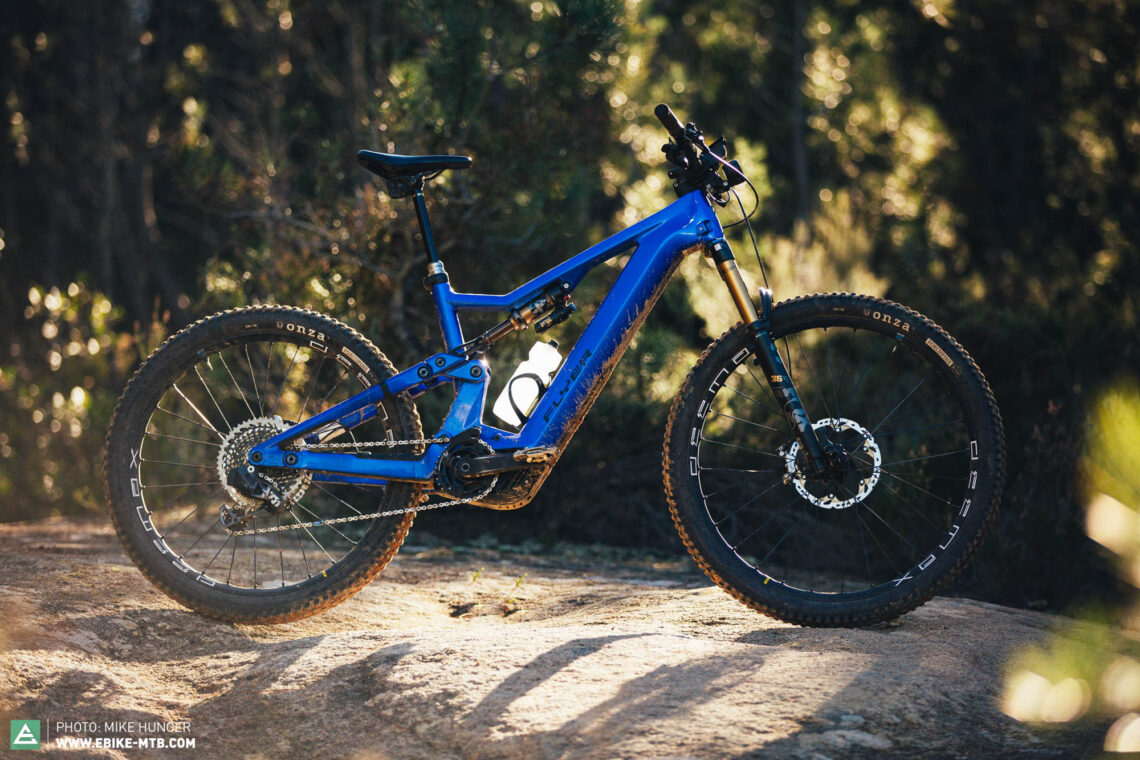
24.8 kg in size L | € 11,299 | Manufacturer’s website
If we didn’t actually have the bike in our hands, we would assume that the FLYER team designs their bikes just for their own use. Based within the Swiss Plateau, the manufacturer only produces ebikes, which makes sense if you want to explore your way through the hilly region nestled between the Alps and the Jura mountains. FLYER’s newcomer, the Uproc X 9.50, wants to do just that, joining their eMTB portfolio as the ultimate peak conqueror, thus placing right between the downhill-oriented Uproc6 and more touring-oriented eMTB models, like the Goroc3. With its 150 mm of travel (f/r), mullet wheel setup (29″/27.5″) and a motor system that is unique in this test field, the 24.8 kg Uproc X 9.50 aims to put a big smile on the face of all uphill and downhill fans.

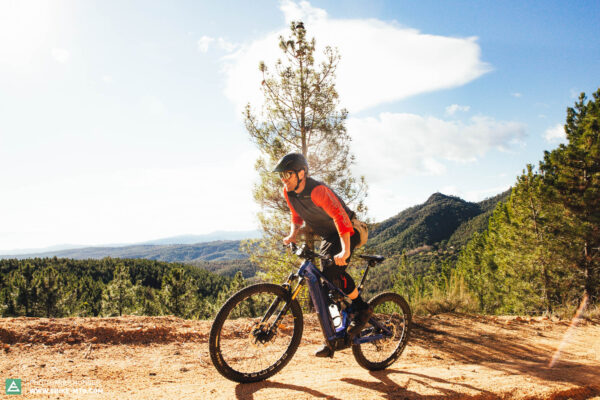

For an overview of the test fleet head to the group test: The best eMTB of 2023 – 30 models in review
As FIT as a fiddle – How does the FLYER Uproc X 9.50 compare to the competition with its unique motor system?
The FLYER Uproc X is the only eMTB in the entire test field to feature a Panasonic motor. Not just any Panasonic motor, but the flagship 95 Nm GX Ultimate model, which secures it the “torque crown” in this test. The motor is complemented by a matching 750 Wh FLYER FIB battery, which can be removed from the side of the down tube using the 6 mm Allen Key hidden inside the rear thru axle. The charging port is positioned on the seat tube and protected by a robust plastic cover. The complete system around the Panasonic motor is supplied by system integrator FIT, a subsidiary of FLYER. The display ensures excellent readability and offers countless data fields and exciting functions, like the inclinometer and black ice warning, which aren’t very common for an eMTB.
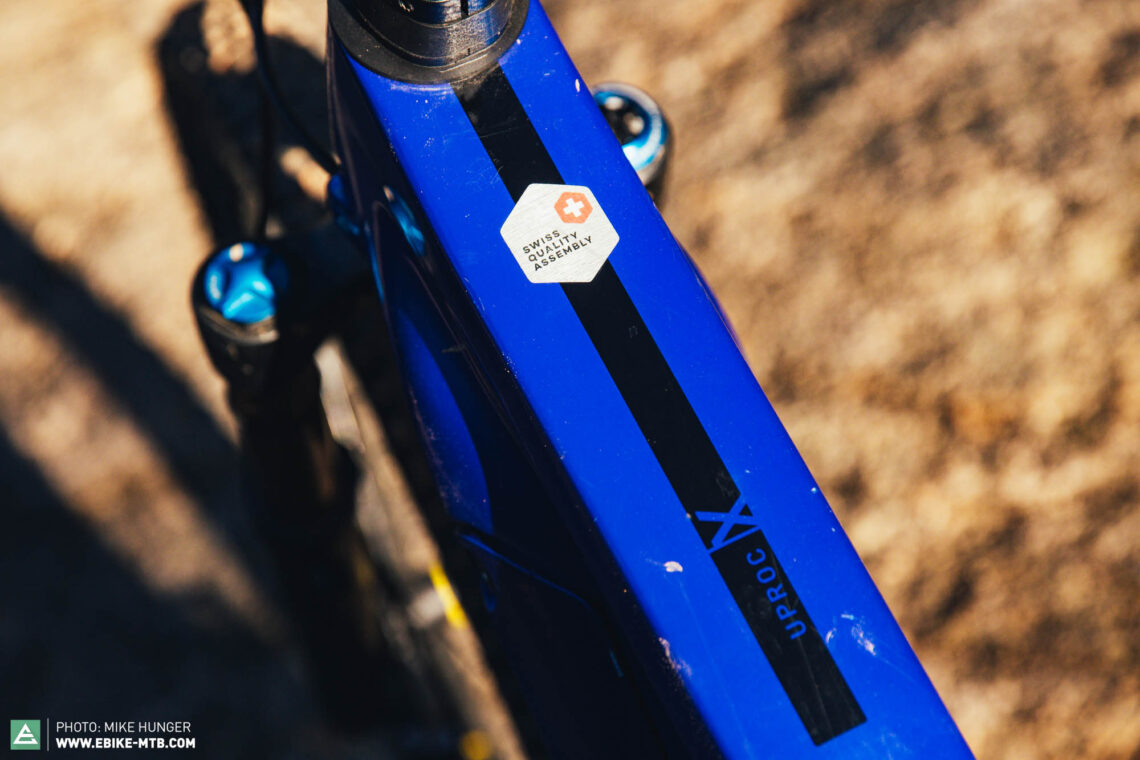


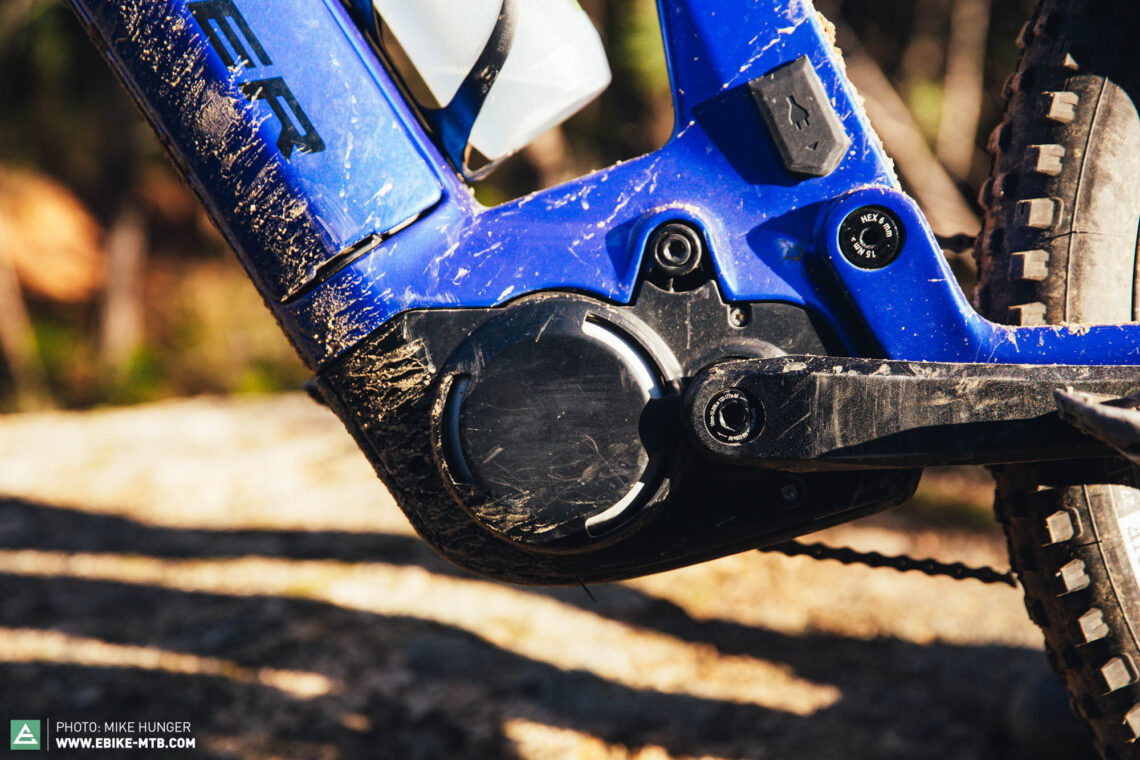
Unfortunately, the integration isn’t so good: the display is positioned right in front of the cockpit, where it’s exposed to impacts in the event of a crash. The clunky joystick remote takes some getting used to and provides poor ergonomics, relying on a separate clamp and thus interfering with the clamp of the XT brakes. At least the buttons provide speed-dependent vibration feedback, so the system will let you know when you press a button by accident. Like the BULLS SONIC EVO EN-SL1, the FLYER features a MonkeyLink mount at the bottom of the display holder, which allows you to simply clip in a headlight. According to the Swiss manufacturer, the Uproc X 9.50 production bike will be delivered with a one-piece cockpit that integrates the display and remote holder, data cables, and a head tube mounted multitool.
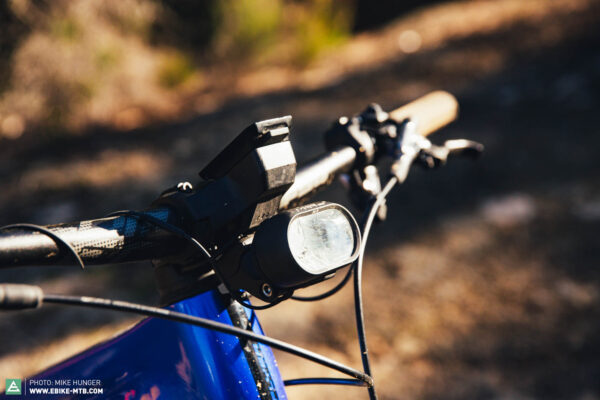
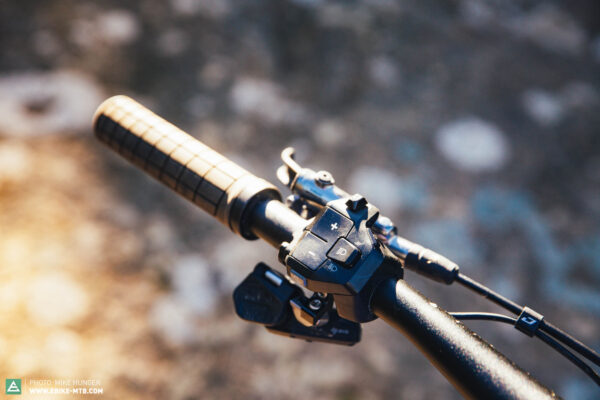
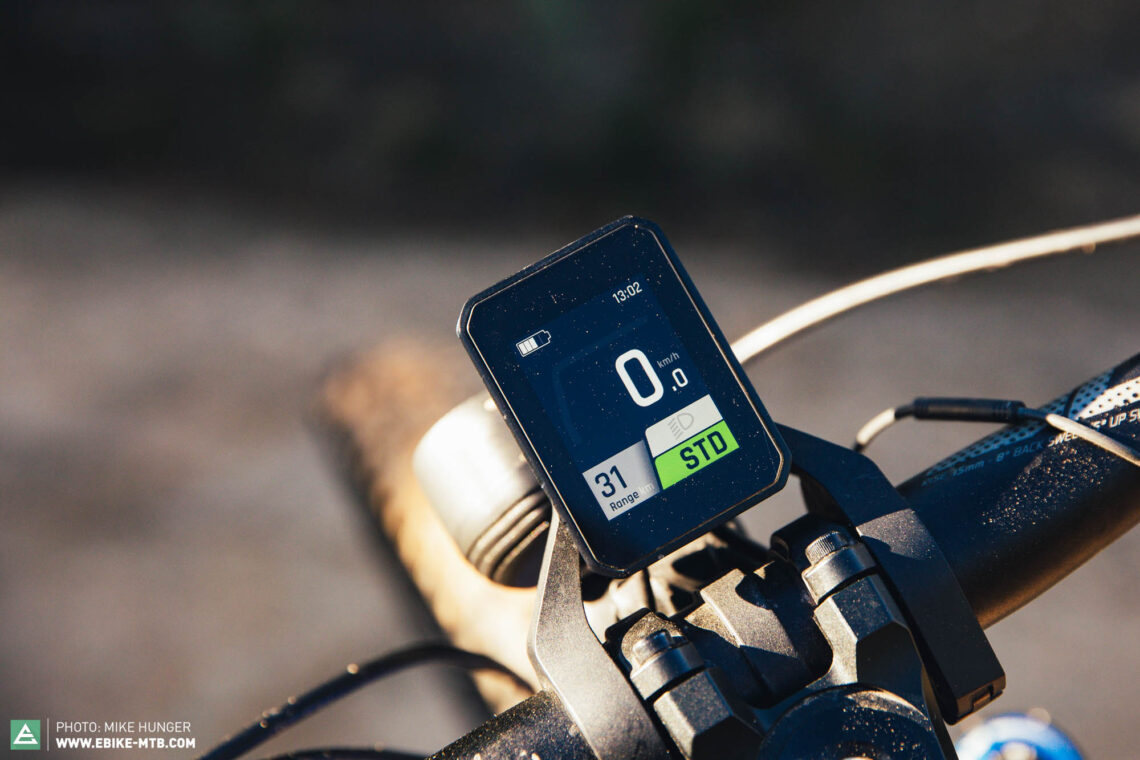
Both the frame and cable routing of our test bike don’t make the highest quality impression. Although the frame silhouette isn’t too shabby per-se, relying on straight, clearly structured lines, the big gaps around the battery and motor mounts as well as the bright blue paint finish make for an overall inharmonious look. The spec, on the other hand, is beyond reproach, consisting of extremely high quality components, except for the tires. We suspect that the low-profile ONZA Porcupine tires were chosen because the Swiss tire manufacturer is based just down the road from FLYER’s headquarters, as they lack traction in muddy and loose conditions.
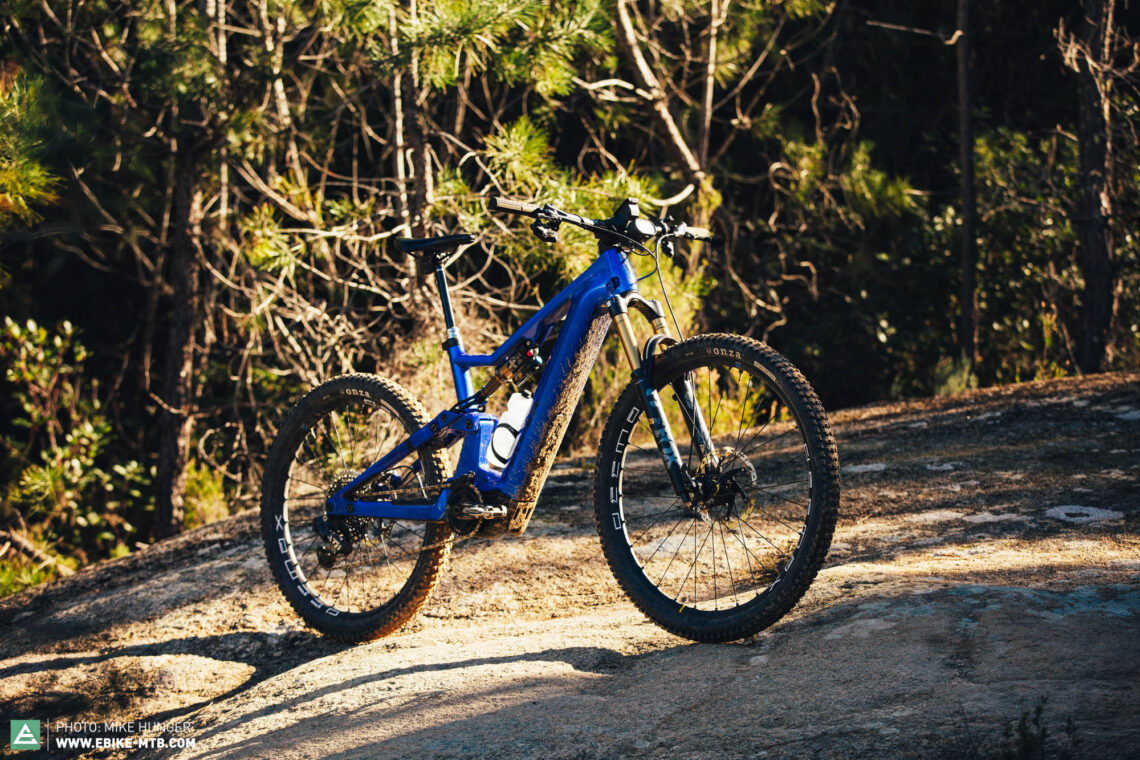
FLYER Uproc X 9.50
€ 11,299
Specifications
Motor Panasonic GX Ultimate Pro FIT 95 Nm
Battery FLYER FIB-750 750 Wh
Display FIT Display Compact
Fork FOX 36 Factory FLOAT GRIP2 Kashima 150 mm
Rear Shock FOX FLOAT X Factory 150 mm
Seatpost RockShox Reverb AXS 170 mm
Brakes Shimano XTR 200/200 mm
Drivetrain SRAM AXS Eagle X01 1x12
Stem Satori Ursa 40 mm
Handlebar FSA COMET 800 mm
Wheelset Mavic E-Deemax 30 29"/27.5"
Tires ONZA Porcupine TRC/ONZA Porcupine GRC 2.4/2.6
Technical Data
Size S M L XL
Weight 24.8 kg
Perm. total weight 140 kg
Max. payload (rider/equipment) 115 kg
Trailer approval no
Kickstand mount no
Specific Features
MonkeyLink light holder
Tuning tip: Grippier tires and handlebars with more rise to prevent chilling OTB moments
From the flatlands to the Monte Rosa – What is the FLYER Uproc X 9.50 capable of?
The Uproc X places you in a compact, pleasantly upright pedalling position which, together with the powerful Panasonic motor, big battery and countless touring features, like the navigation function, makes the FLYER an excellent tourer. The navigation function of the FIT display works in conjunction with the FIT ebike control smartphone app. When you approach the epic climbs of the Swiss Alps, the FLYER doesn’t shy away either, grinding its way up steep climbing sections with tons of traction – the powerful Panasonic motor provides plenty of oomph. At the same time, the front wheel remains planted on the ground, allowing the FLYER to generate good amounts of traction front and rear, thus making it easy to follow your line even in nasty tech sections. The long motor overrun helps you clear roots and steps that are too big to overcome solely with the power of your legs. Only on wet and loose terrain do the shallow profiled tires struggle to generate traction.
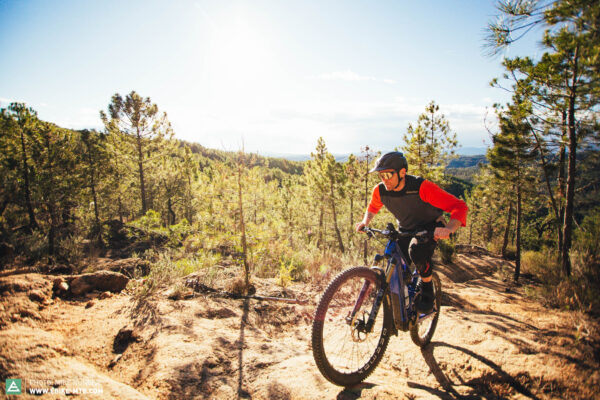
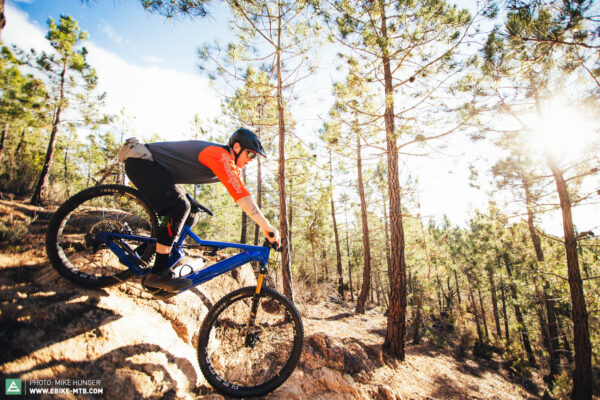
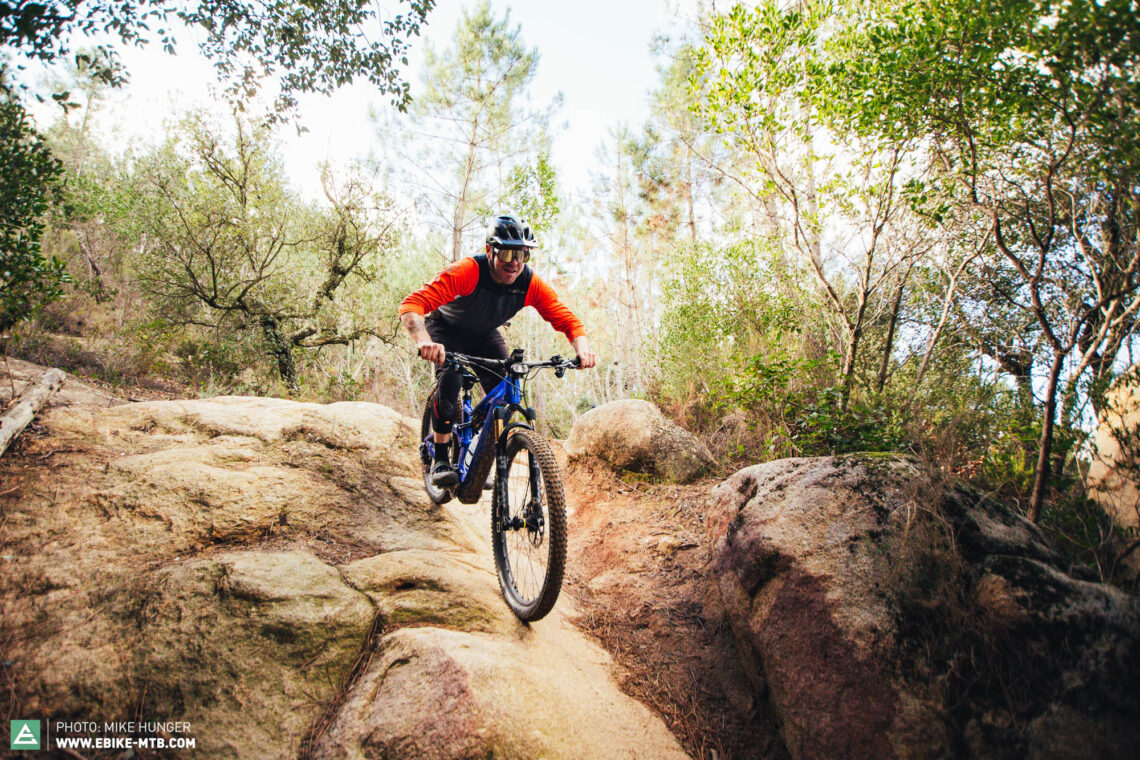
If your idea of fun doesn’t end on the climbs but also includes some downhill action, the Uproc X quickly leaves its comfort zone. On flow trails, the suspension lacks mid-stroke support, making it hard to build up speed by pumping through rollers. While the FLYER still holds a comfortable lead over most bikes in this test on climbs, it falls behind nearly all of its opponents downhill. On steep descents, we wished we were more integrated with the bike. Here the FLYER tends to understeer when braking, triggering unnerving OTB moments. To make things worse, the cables and frame hardware of the FLYER rattle loudly on the trail.
Climbing veteran! The FLYER Uproc X 9.50 delivers an excellent performance uphill but shows clear weaknesses downhill.
| Size | S | M | L | XL |
|---|---|---|---|---|
| Top tube | 576 mm | 589 mm | 619 mm | 645 mm |
| Seat tube | 400 mm | 415 mm | 450 mm | 485 mm |
| Head tube | 100 mm | 110 mm | 120 mm | 140 mm |
| Head angle | 64.5° | 65.0° | 65.0° | 65.0° |
| Seat angle | 77.0° | 77.0° | 77.0° | 77.0° |
| Chainstays | 460 mm | 460 mm | 460 mm | 460 mm |
| BB Drop | 31/12 mm | 31/12 mm | 31/12 mm | 31/12 mm |
| Wheelbase | 1,221 mm | 1,229 mm | 1,261 mm | 1,291 mm |
| Reach | 435 mm | 445 mm | 473 mm | 495 mm |
| Stack | 612 mm | 622 mm | 631 mm | 650 mm |

Jersey Troy Lee Designs Ruckus 3/4 | Shorts HIRU Lab | Kneepad Troy Lee Designs Stage
Shoes Five Ten Hellcat Pro | Socks HIRU Merino
What goes up, doesn’t always come down – Who should take a closer look at the FLYER Uproc X 9.50?
The FLYER is an excellent choice for touring enthusiasts, proving an excellent companion for epic, Alpine backcountry adventures. Climbing veterans who prefer to grind their way up the mountain on slow, twisted trails with hairpin switchbacks rather than ploughing their way back into the valley at Mach 10 will also get their money’s worth with the Uproc X 9.50. On the other hand, electric novices will quickly get overwhelmed by the FLYER’s demanding trail handling, while experienced riders might be better off with an ebike that manages its reserves better. The latter category should take a closer look at our Best in test, the Orbea WILD, and our Best buy tip, the RADON DEFT.
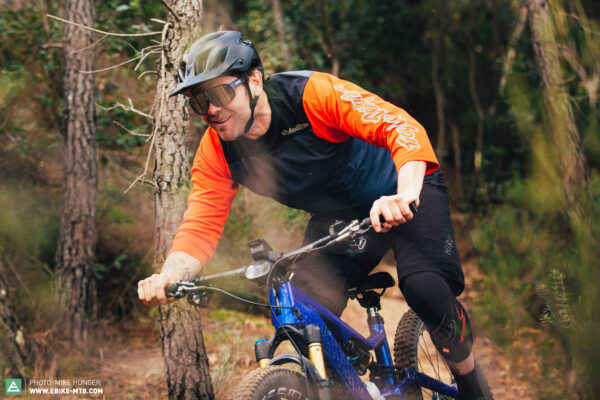

Riding Characteristics
DESIGN
- unbalanced
- coherent
USER FRIENDLINESS
- cumbersome
- clever
VALUE FOR MONEY
- flop
- top
TREKKING & COMMUTING SUITABILITY
- low
- high
HANDLING
- demanding
- intuitive
FUN FACTOR
- boring
- lively
Intended Use
Gravel roads
Technical climbs
Flowtrail descents
Technical descents
Conclusions about the FLYER Uproc X 9.50
The FLYER Uproc X 9.50 shows its strengths on long tours with plenty of vertical metres and technical climbing sections. This is where the powerful motor and the FIT system’s wide range of functions make the difference. Downhill, the FLYER gets easily overwhelmed and quickly reaches its limits in the hands of experienced riders. As a result, it can’t keep up with the strong all-round eMTBs in this test, some of which are also significantly cheaper.
Tops
- Excellent touring and climbing capabilities
- High-quality spec
- Strong connectivity features
Flops
- Loud rattling downhill
- Cockpit ergonomics
- Tires lack grip on loose terrain
- Spongy suspension
You can find out more about at flyer-bikes.com
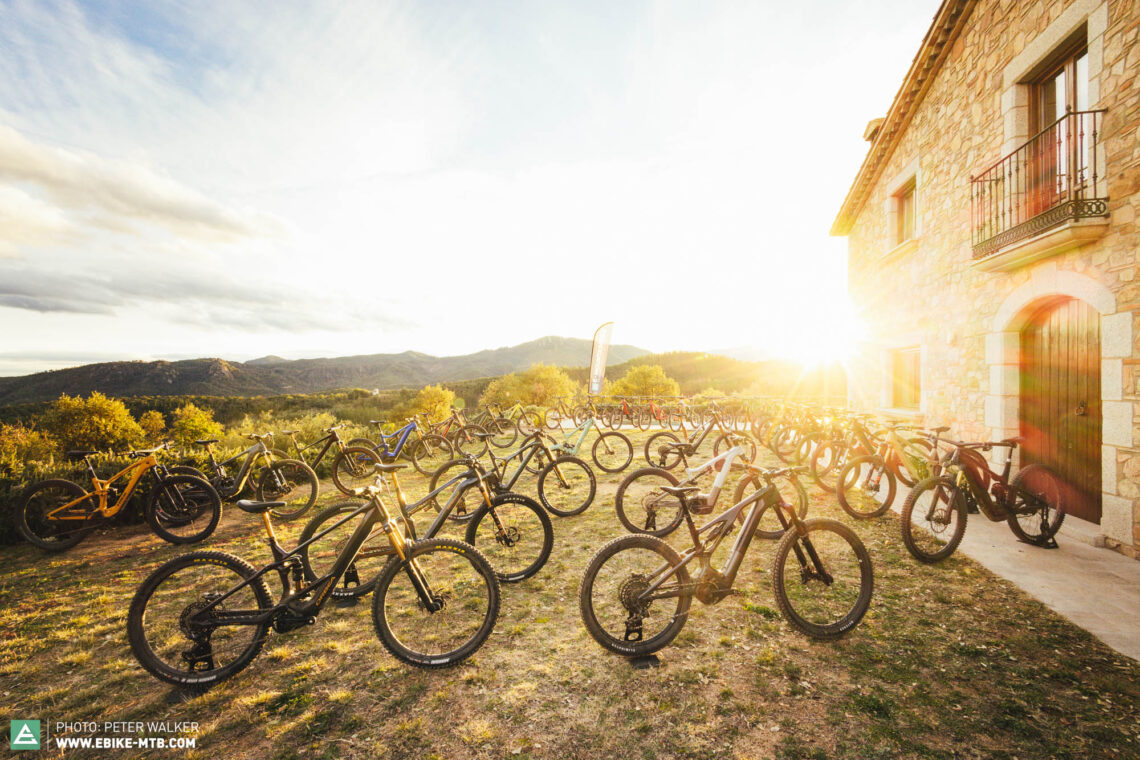
The test field
For an overview of the test fleet head to the group test: The best eMTB of 2023 – 30 models in review
All bikes in test: Berria Mako Hybrid GT LTD (Click for review) | Bulls SONIC EVO SL EN-1 (Click for review) | Cannondale Moterra Neo Carbon LT1 (Click for review) | Flyer Uproc X 9.50 | Focus SAM² 6.9 (Click for review) | Focus JAM² 6.9 (Click for review) | Focus Jam² SL 9.9 (Click for review) | Forestal Siryon Diōde (Click for review) | Giant Trance X Advanced E+ Ltd (Click for review) | Haibike Lyke CF SE (Click for review) | Ibis OSO (Click for review) | KTM Macina Prowler Exonic (Click for review) | MERIDA eONE-SIXTY 975 (Click for review) | Mondraker Crafty Carbon XR LTD (Click for review) | Moustache Samedi 29 Game 11 (Click for review) | Orbea Rise M-Team (Click for review) | Orbea WILD M-LTD (Click for review) | Pivot Shuttle SL Pro X01 (Click for review) | Pivot Shuttle LT Team XTR (Click for review) | Radon Deft 10.0 (Click for review) | Rotwild R.X735 Ultra (Click for review) | Santa Cruz Heckler MX XO1 AXS RSV (Click for review) | SCOTT Lumen eRide 900 SL (Click for review) | Simplon Rapcon Pmax TQ (Click for review) | Specialized Turbo Levo Expert (Click for review) | Transition Repeater AXS Carbon (Click for review) | Thömus Lightrider E Ultimate (Click for review) | Trek Fuel EXe 9.9 XX1 AXS (Click for review) | UNNO Mith Race (Click for review) | Yeti 160E T1 (Click for review)
Did you enjoy this article? If so, we would be stoked if you decide to support us with a monthly contribution. By becoming a supporter of E-MOUNTAINBIKE, you will help secure a sustainable future for high-quality cycling journalism. Click here to learn more.
Words: Rudolf Fischer Photos: Mike Hunger









